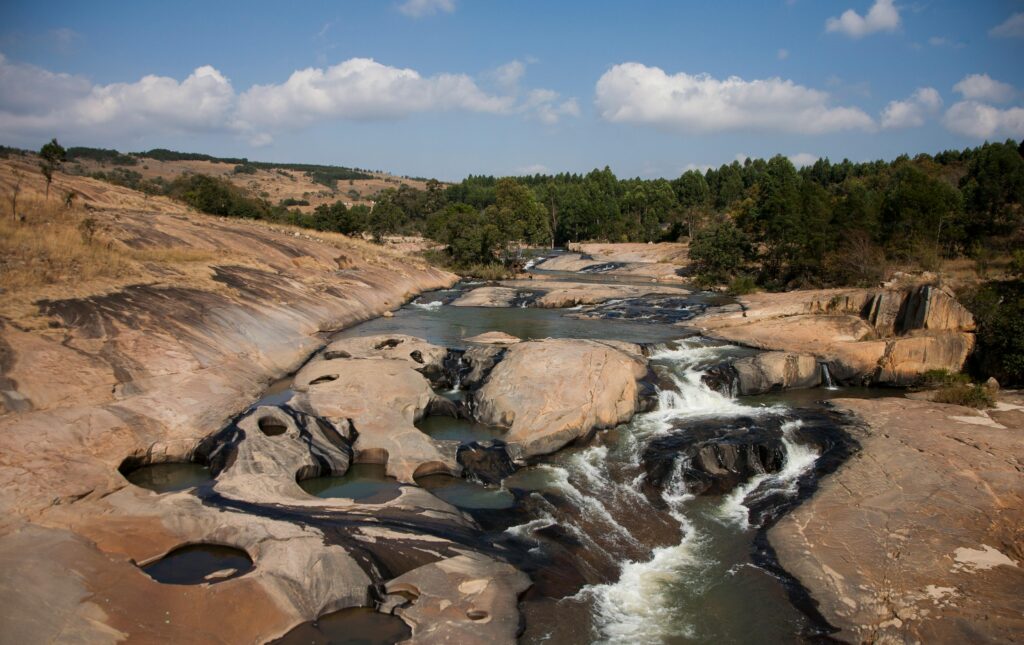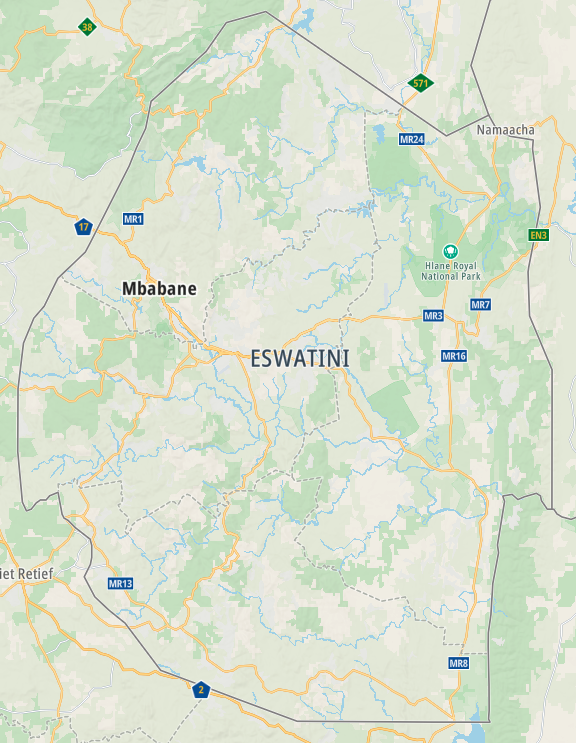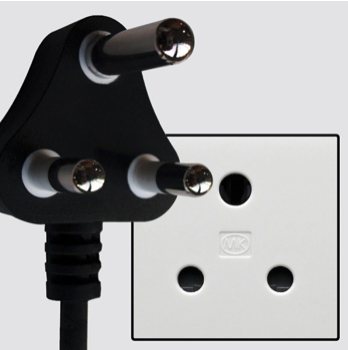Eswatini / Umbuso weSwatini – Let’s explore here

What’s it like in Eswatini?
Eswatini, formerly known as Swaziland, is relatively small, mountainous, landlocked Kingdom in southern Africa. It’s slightly smaller than Wales, and in the south of the country it’s less populated and consists of African bush – thorn trees and grasslands. The highest point is Mount Emlembe, in the north west of the country, at 6,109 ft (1,862 m) above sea level.
The King of Eswatini rules the county as an absolute monarchy, the last of its kind in Africa. The kingdom was established in the mid-18th century. It shares land borders with South Africa and Mozambique.
The population Eswatini is around 1¼ million people (2023). It has two capital cities, Mbabane, with a population of around 95,000 and Lobamba, with a population of around 10,000 people. It has a very young population, with more than a third being under the age of 15 years.

A bit about the history of Eswatini
Early History and Indigenous Groups
Eswatini has a rich history rooted in the traditions of the Swazi people. The Swazi Kingdom traces its origins to the 18th century when the Nguni-speaking people, including the Swazi, migrated to the region. The Swazi Kingdom was established under King Ngwane III, who united various clans and formed a consolidated state. Over time, the Swazi people maintained a relatively stable kingdom, centred in the area that is now Eswatini.
Colonial Period and British Protectorate
In the late 19th century, during the Scramble for Africa, European powers expanded their control over much of the continent. In 1903, following conflicts with neighbouring Boer settlers and the British, the Swazi Kingdom became a British protectorate under the name ‘Swaziland’. Despite this, the Swazi monarchy retained some level of authority, though under British supervision. Swaziland’s economy during the colonial period was largely based on agriculture, and the British administered the country with minimal interference in traditional governance structures.
Path to Independence
In the mid 20th century, as African nationalism and the push for independence grew across the continent, Swaziland’s political landscape began to shift. In 1963, Swaziland was granted internal self government, and in 1967, King Sobhuza II took steps to assert more autonomy. After years of negotiation, Swaziland gained full independence from Britain on 6 September 1968, with Sobhuza II remaining as the head of state. This marked the beginning of the country’s post colonial era, although Sobhuza II maintained significant power over political affairs.
Sobhuza II’s Reign and the Establishment of Absolute Monarchy
Following independence, King Sobhuza II ruled with considerable authority, consolidating his power and working to preserve traditional Swazi customs. In 1973, Sobhuza II suspended the constitution and dissolved the parliament, declaring absolute monarchy. He took full control of the government and ruled the country as an autocrat. Sobhuza’s reign was marked by an emphasis on maintaining traditional values and a strong centralised monarchy, although his government faced increasing pressure for political reform.
Transition After Sobhuza II and King Mswati III
King Sobhuza II passed away in 1982, leaving a significant legacy as the longest reigning monarch in Swazi history. After his death, his son, Prince Makhosetive, ascended to the throne as King Mswati III in 1986. Mswati III continued the policy of absolute monarchy and remained resistant to democratic reforms. Despite international calls for political change, Eswatini continued to maintain a political system dominated by the monarchy, with limited political freedom and no opposition parties allowed.
Political and Economic Issues
Eswatini’s political system has long been criticised for its lack of democratic processes. Opposition parties have been banned, and political dissent has often been met with harsh repression. The country also faces significant economic challenges, including high unemployment, poverty, and dependence on South Africa for trade and economic stability. Despite its wealth in certain sectors, such as agriculture and mining, much of the population lives in poverty. In the 1990s and early 2000s, there were several attempts to push for democratic reforms, but these were largely unsuccessful due to the resistance of the monarchy. Pro-democracy movements have faced suppression, and the government has maintained strict control over the political environment.
Recent Developments and Calls for Reform
In recent years, Eswatini has faced increasing pressure both internally and from the international community to address issues such as political freedom, human rights and economic inequality. In 2018, King Mswati III announced the official name change of the country from Swaziland to Eswatini to mark the 50th anniversary of independence and the 50th year of his father’s reign. However, political reforms have remained limited, and the monarchy continues to hold significant control. The country also faced major protests in 2021, with calls for greater democracy and an end to authoritarian rule. These protests were sparked by growing frustrations over poverty, unemployment and the lack of political freedoms. The government responded with force, leading to violent clashes between protesters and security forces. The ongoing tensions reflect the broader dissatisfaction with Eswatini’s political system and the monarchy’s centralised power.
Modern Eswatini
Eswatini remains one of the few remaining absolute monarchies in the world. King Mswati III continues to rule with a firm grip on power, and the political system is largely characterised by the absence of a multiparty democracy. Despite these challenges, Eswatini maintains a relatively stable political environment, though the call for greater democratic reforms and political freedoms persists. The monarchy, however, shows little sign of relinquishing control.

Eswatini road trip
Our Swazi road trip is part of a much larger African road trip.
Map of Eswatini

Our current planned route takes us from Lesotho, across South Africa towards the capital, Mbabane, before heading back into South Africa and on to Botswana.
Hopefully our journey will improve our knowledge of this intriguing and beautiful country, and enable us to meet some interesting people. We’ll be updating this page at that time – don’t forget to check back 🙂
What’s it like to drive in Eswatini?
They drive on the left hand side of the road in Swaziland. In the main, roads are better than average, with many being surfaced, although many are dirt tracks. Driving standards are poor however.
Do you require an international driving permit in Swaziland?
We’ve created a dedicated page to driving abroad, which answers this question, and more, which you might find helpful.
Can you use your UK driving license when driving through Swaziland?
We’ve created a dedicated page to driving abroad, which answers this question, and more, which you might find helpful.
Do I need a carnet de passages to drive in Swaziland?
A Carnet de Passages is required to overland in Eswatini.
If your vehicle is not registered in Swaziland, you must complete a customs declaration form at the border post and pay a 100 Swazi emalangeni road fund levy.
We’ve created a dedicated page to driving abroad, which answers this question, and more, which you might find helpful.
What currency do they use in Eswatini?
In Lesotho they use the Swazi lilangeni, although the South African Rand is also accepted. Cash is widely used. The use of credit / debit cards is not widely accepted outside of the capital. Travellers cheques are not readily accepted. There are some ATMs throughout the country.
You should make yourself aware of the amount that your bank charges you for using credit and debit cards abroad. Often credit cards are cheaper for purchasing items directly, and for withdrawing cash from ATMs.
What language do they speak in Swaziland?
They mainly speak Swazi and English in Swaziland.
What time zone is Swaziland in?
Remember, when you’re planning your next trip to take a look at what time zone it’s in.
Do I need a visa to visit Eswatini?
We’ve created a dedicated, more comprehensive page on visas, which you should find helpful. Check it out!
Is wild camping legal in Eswatini?
Yes, wild camping is fine in Swaziland.
What plug / socket type do they use in Eswatini?

In Eswatini they use plug / socket type M.
Health issues in Eswatini
Eswatini has the highest prevalence of HIV among people aged 15 to 49 in the world, at 27.1%.
Is it safe to drink water in Eswatini?
No, it is not safe to drink tap water in Swaziland. Bottled water is readily available throughout the country.
What vaccinations are required for Eswatini?
This NHS website is kept up to date with all relevant information on vaccinations in Eswatini.
Phones in Eswatini
What is the country calling code for Eswatini?
The country calling code for Eswatini is +268
What are the emergency phone numbers in Eswatini?
- The emergency number for police in Swaziland is: 999
- In Swaziland, the emergency number for ambulance is: 977
- The emergency number for fire in Swaziland is: 933
If you’ve got some useful info that you’d like to share, let us know!
And don’t forget to check out all the other pictures!
